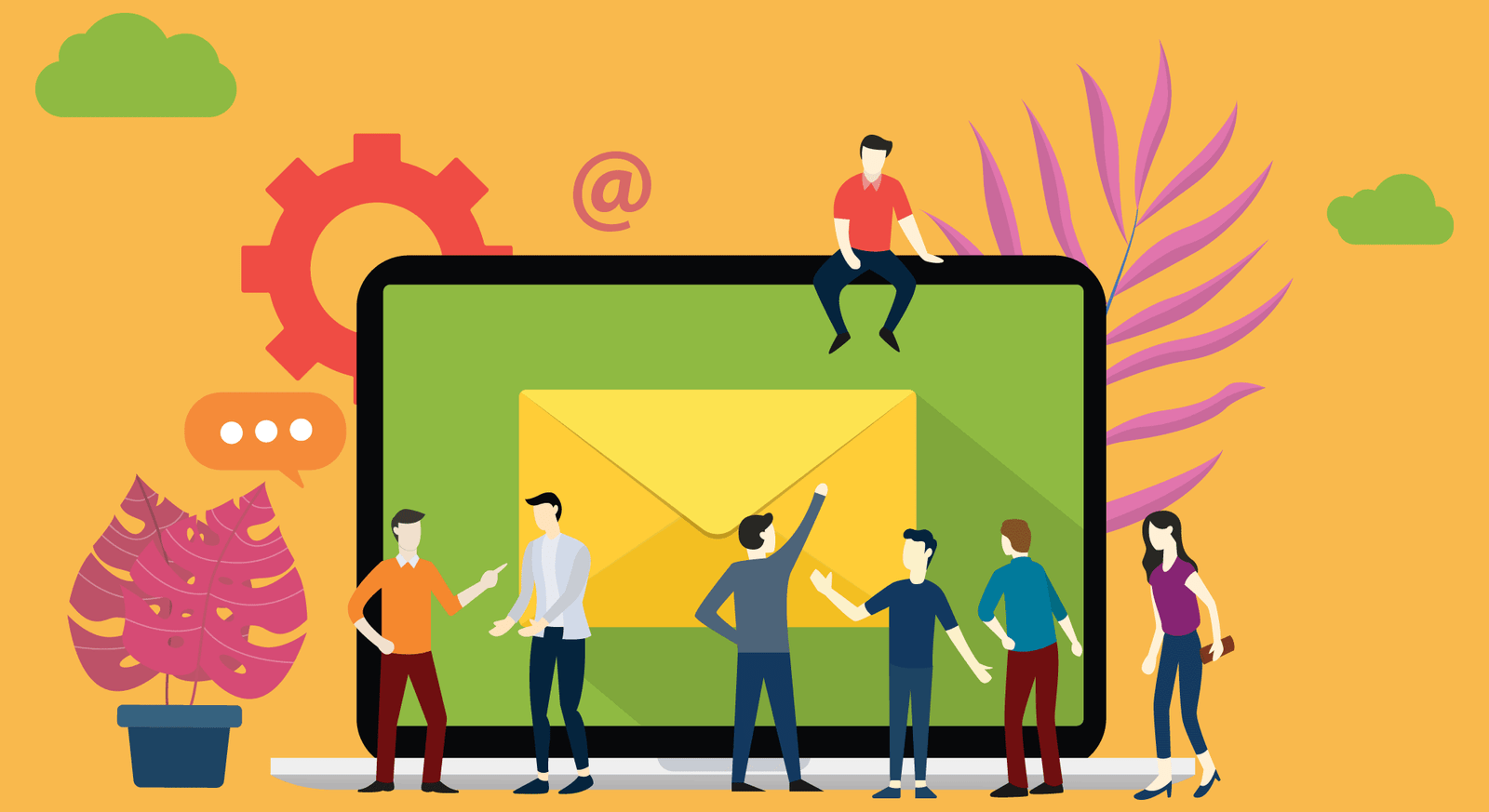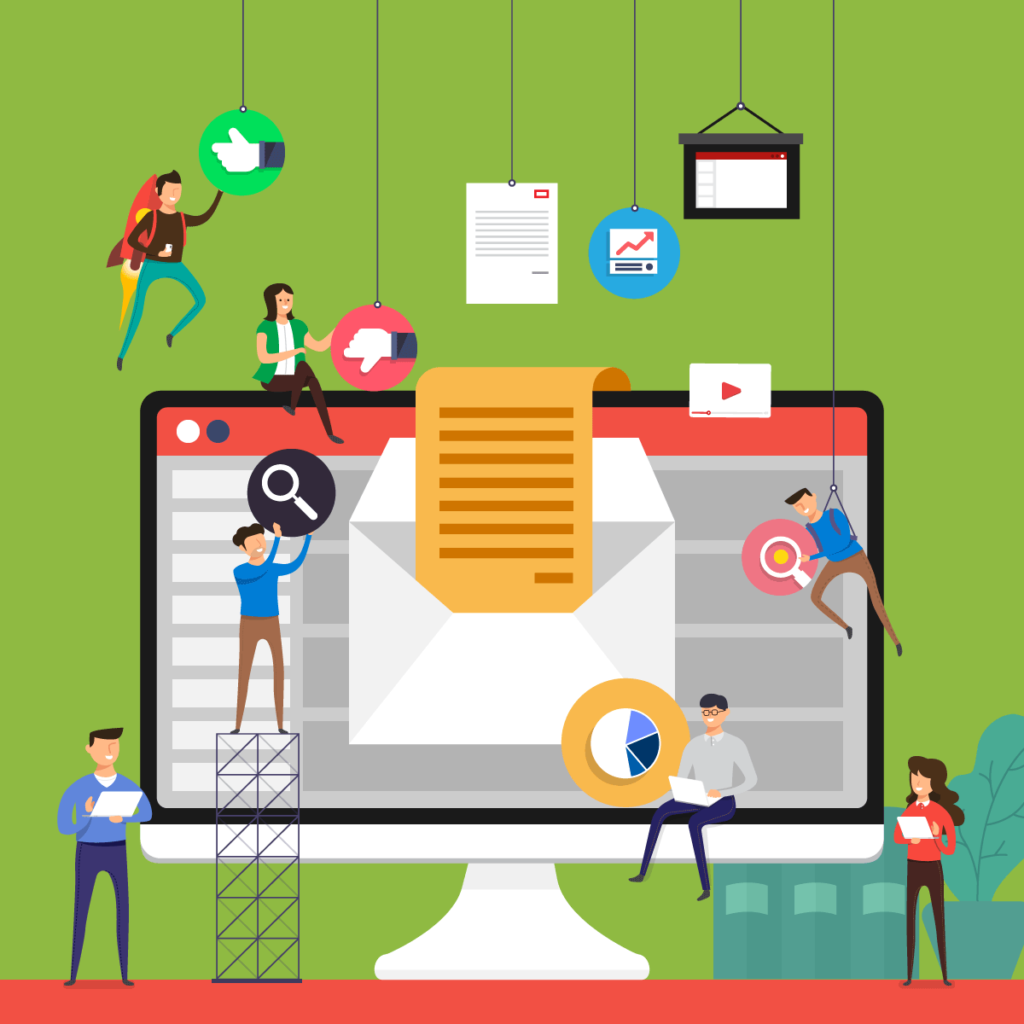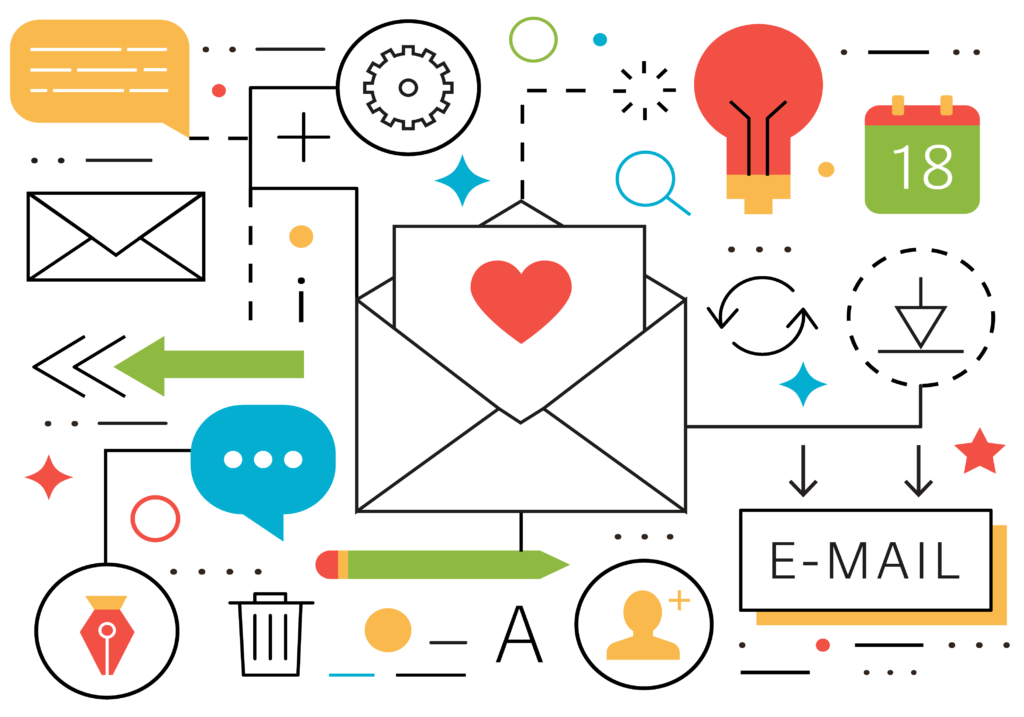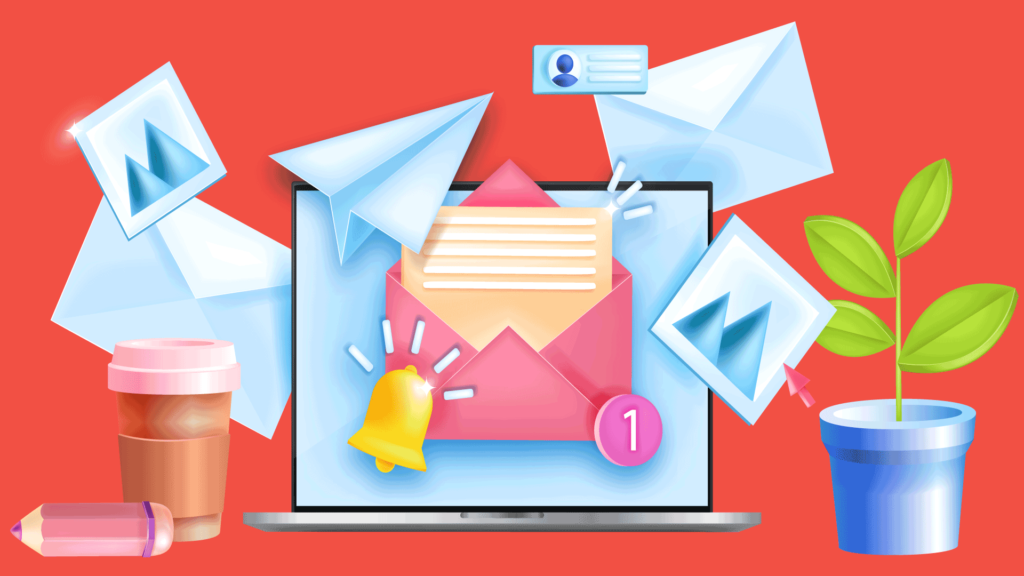
In the age of social media and digital marketing, email marketing strategies may seem like an archaic approach to reaching customers. However, it remains one of the most effective digital marketing strategies out there.
Unlike social media platforms, email marketing strategies provide a direct line of communication with your audience, allowing for personalized and targeted messaging. It is a cost-effective method of reaching a large number of people quickly and efficiently, while also allowing you to track your results and tweak your strategy as needed.
In this post, we will delve into the power of email marketing strategies and why it continues to reign supreme in the digital age, including its ability to increase brand awareness, drive sales, and build customer loyalty. So, sit back, grab a cup of coffee, and let’s dive in!
THE CORNERSTONE OF DIGITAL COMMUNICATION
Email marketing strategies have long been hailed as the cornerstone of digital communication, and for good reason. In today’s fast-paced digital age, where social media platforms come and go, and algorithms constantly change, email remains a steadfast and reliable channel for reaching and engaging with your audience.
With an estimated 4 billion email users worldwide, email marketing strategies provide a direct line of communication to your customers, allowing you to deliver personalized messages, promotions, and updates right to their inbox.
Unlike social media posts that can easily get lost in a sea of content, emails have a higher chance of being seen and engaged with by your target audience.
Moreover, email marketing strategies allow for segmentation and targeting, enabling you to tailor your messages to specific customer segments based on their preferences, behaviors, and interactions with your brand. This level of personalization are the peak benefits of email marketing that can lead to higher engagement rates, increased brand loyalty, and ultimately, improved conversion rates.
In essence, email marketing strategies reigns supreme in the digital age because of its unparalleled ability to deliver targeted, personalized, and measurable communication that cuts through the digital noise and fosters meaningful connections with your audience.
THE POWER OF PERSONALIZATION IN EMAIL MARKETING STRATEGIES
Personalization in email marketing strategies is not just a trend; it’s a powerful strategy that can significantly impact the success of your campaigns. By tailoring your emails to individual recipients based on their preferences, behaviors, and demographics, you create a more engaging and relevant experience for them.
When a subscriber receives an email that addresses them by name, recommends products based on their past purchases, or sends them exclusive offers tailored to their interests, they are more likely to pay attention and take action.
Personalization makes your emails stand out in a crowded inbox and helps build a stronger connection with your audience.
Moreover, personalization can lead to higher open rates, click-through rates, and conversions. Studies have shown that personalized emails generate better results compared to generic ones.
By taking the time to segment your email list and craft personalized content, you can deliver the right message to the right person at the right time, driving engagement and ultimately, revenue.
In the digital age where consumers are inundated with marketing messages, personalization sets your emails apart and makes them more impactful. It shows that you understand your audience and care about their needs, building trust and loyalty in the process.
Embrace the power of personalization in your email marketing strategies efforts to unlock its full potential and drive meaningful results for your business.

EFFECTIVE STRATEGIES FOR BUILDING AN ENGAGING EMAIL MARKETING STRATEGIES CAMPAIGN
Building an engaging email marketing strategies campaign is crucial in today’s digital age where consumers are bombarded with countless messages daily.
To stand out in the sea of emails, you need to craft compelling content that resonates with your audience. One effective strategy is personalization. Tailoring your emails to suit the preferences and behaviors of your subscribers can significantly increase engagement.
By using data such as purchase history, browsing activity, or demographic information, you can create targeted and relevant emails that capture the attention of your readers.
Another key strategy is to focus on creating eye-catching visuals and compelling copy. A well-designed email with visually appealing graphics and concise, persuasive language is more likely to grab the recipient’s attention and encourage them to take action.
Remember to keep your messaging clear and concise, and include a strong call-to-action that prompts the reader to click through to your website or make a purchase.
Furthermore, segmenting your email list based on different criteria such as demographics, purchase behavior, or engagement levels can help you deliver more personalized and targeted content to specific groups of subscribers. This tailored approach can lead to higher open rates, click-through rates, and ultimately, conversions.
In addition, don’t underestimate the power of testing and optimization. A/B testing different elements of your emails, such as subject lines, content, images, and call-to-action buttons, can provide valuable insights into what resonates best with your audience. By continuously testing and refining your email campaigns based on data-driven results, you can improve their effectiveness and drive better results over time.
By implementing these effective strategies for building engaging email marketing strategies campaigns, you can harness the power of this versatile channel to connect with your audience, build relationships, and drive conversions in the digital age.
Maximizing Data And Analytics For Email Marketing Strategies Success
In the realm of email marketing strategies, data and analytics are the crown jewels that can elevate your campaigns to new heights of success. By harnessing the power of data-driven insights, you can personalize your email content, segment your audience effectively, and optimize your strategies for maximum impact.
One of the key advantages of email marketing strategies is the wealth of data it provides. From open rates and click-through rates to customer preferences and behaviors, every interaction with your emails offers valuable insights that can inform your future campaigns. By delving into this data and analyzing it effectively, you can gain a deeper understanding of your audience and tailor your messaging to resonate with their needs and interests.
Analytics play a crucial role in measuring the effectiveness of your email campaigns. By tracking key metrics such as conversion rates, engagement levels, and ROI, you can assess the performance of your emails and identify areas for improvement. This data-driven approach allows you to refine your strategies, test different elements, and optimize your campaigns for better results.
With the right tools and techniques in place, data and analytics can be powerful allies in your quest for email marketing strategies success. By leveraging these insights intelligently, you can create targeted, relevant, and impactful campaigns that engage your audience, drive conversions, and ultimately, help your brand reign supreme in the digital age.
The Role Of Automation In Streamlining Email Campaigns
Automation plays a pivotal role in streamlining email campaigns, revolutionizing the way businesses engage with their audience in the digital age. By leveraging automation tools, businesses can personalize and target their emails based on customer behavior, preferences, and interactions with the brand.
One of the key advantages of automation is the ability to set up automated email workflows, such as welcome sequences, abandoned cart reminders, and post-purchase follow-ups. These automated sequences enable businesses to deliver timely and relevant content to their subscribers, nurturing relationships and driving conversions.
Moreover, automation allows for segmentation of email lists based on various criteria, ensuring that each subscriber receives content tailored to their interests and needs. This personalized approach not only enhances the customer experience but also increases the effectiveness of email campaigns.
In addition, automation enables businesses to track and analyze the performance of their email campaigns in real-time. By monitoring key metrics such as open rates, click-through rates, and conversions, businesses can optimize their email strategies for better results.
Overall, automation empowers businesses to create more efficient, targeted, and data-driven email campaigns, ultimately maximizing the impact of email marketing strategies in the digital age.
Crafting Compelling Email Content: Tips And Best Practices
Crafting compelling email content is crucial to the success of your email marketing campaigns. Your emails need to grab the attention of your subscribers and entice them to open, read, and engage with your content. Here are some tips and best practices to help you create effective and engaging email content:
Personalization is Key
Personalizing your emails by addressing subscribers by their name and tailoring the content to their preferences and behaviors can significantly increase engagement and conversions.
Clear and Concise Subject Lines
Your subject line is the first thing subscribers see, so make sure it is clear, concise, and compelling. A strong subject line can entice recipients to open the email and discover more.
Engaging Content
Your email content should be engaging, informative, and relevant to your audience. Use visuals, compelling copy, and calls to action to keep subscribers interested and encourage them to take action.
Mobile Optimization
With the majority of emails being opened on mobile devices, it is essential to ensure that your emails are optimized for mobile viewing. Use a responsive design and keep your content concise and easy to read on smaller screens.
A/B Testing
Test different elements of your email campaigns, such as subject lines, content, images, and calls to action, to determine what resonates best with your audience. A/B testing can help you optimize your emails for better performance.
By following these tips and best practices, you can create compelling email content that resonates with your subscribers, drives engagement, and ultimately leads to increased conversions and revenue for your business. Email marketing strategies continue to reign supreme in the digital age, and by crafting compelling email content, you can unlock its full potential and achieve your marketing goals.
Integrating Email Marketing Strategies With Other Digital Marketing Channels
Integrating email marketing strategies with other digital marketing channels can significantly enhance your overall marketing strategy and boost your results. By combining the power of email marketing strategies with other channels such as social media, content marketing, and paid advertising, you can create a cohesive and multi-faceted approach to reaching and engaging your target audience.
Unlike other forms of advertisement, email does not require you to purchase ad space. Sure, it is by no means free to run effective email marketing campaigns, but the barrier for entry simply does not exist.
One effective way to integrate email marketing strategies with other channels is to use social media to grow your email list. By promoting your email campaigns on social platforms and encouraging followers to subscribe, you can expand your reach and attract new subscribers who are already interested in your brand.
Furthermore, leveraging the content you create across different channels can help reinforce your messaging and drive conversions. For example, you can use the benefits of using templates for email marketing campaigns to share blog posts, videos, or infographics and then promote that same content on social media to reach a wider audience.
Paid advertising can also complement your email marketing strategies efforts by targeting specific segments of your email list or using email addresses to create custom audiences for ad campaigns. This integrated approach allows you to deliver consistent messaging and offers across multiple touchpoints, increasing the likelihood of conversion.
By integrating email marketing content strategy with other digital channels, you can create a unified and cohesive marketing strategy that maximizes engagement, drives customer loyalty, and ultimately boosts your overall marketing performance in the digital age.

CONCLUSION
What is email marketing strategy?
Email marketing strategies continue to be a powerful tool in the digital age, and staying abreast of the latest trends is crucial for maximizing its impact. As we look to the future of email marketing strategies, several key trends are emerging that are reshaping the landscape of this marketing channel.
One of the trends to watch is the rise of interactive emails. With advancements in technology, emails are no longer limited to static content. Interactive elements such as quizzes, surveys, and sliders are becoming more prevalent, offering a more engaging and personalized experience for recipients.
Personalization is another key trend that is set to dominate the future of email marketing strategies. By leveraging data and analytics, marketers can create highly targeted and relevant content for their subscribers. From personalized subject lines to dynamic content blocks tailored to individual preferences, personalization is key to driving engagement and conversions.
Automation is also playing a significant role in the evolution of email marketing strategies. Marketers are increasingly turning to automated workflows to deliver timely and relevant messages to their subscribers. From welcome series to cart abandonment emails, automation allows for more targeted and efficient communication with customers.
Furthermore, the continued growth of mobile usage is shaping the future of email marketing strategies. With more and more people accessing their emails on mobile devices, it’s essential for marketers to optimize their campaigns for mobile responsiveness. This includes using mobile-friendly designs and ensuring that emails are easily readable on smaller screens.
Email marketing strategies remain a cornerstone of successful digital marketing strategies, offering unparalleled reach, personalization, and measurable results. As you navigate the ever-evolving landscape of digital marketing, remember the enduring effectiveness of email campaigns and the potential they hold to connect with your audience on a personal level. Embrace the power of email marketing strategies, and watch your business or email marketing job thrive in the digital realm.
In conclusion, as we move forward in the digital age, these trends in email marketing strategies will continue to drive innovation and effectiveness in reaching and engaging audiences. By staying ahead of these trends and incorporating them into your email marketing strategies, you can harness the full power of this timeless marketing channel.



